Your cart is currently empty!
Category: Art & Business
-
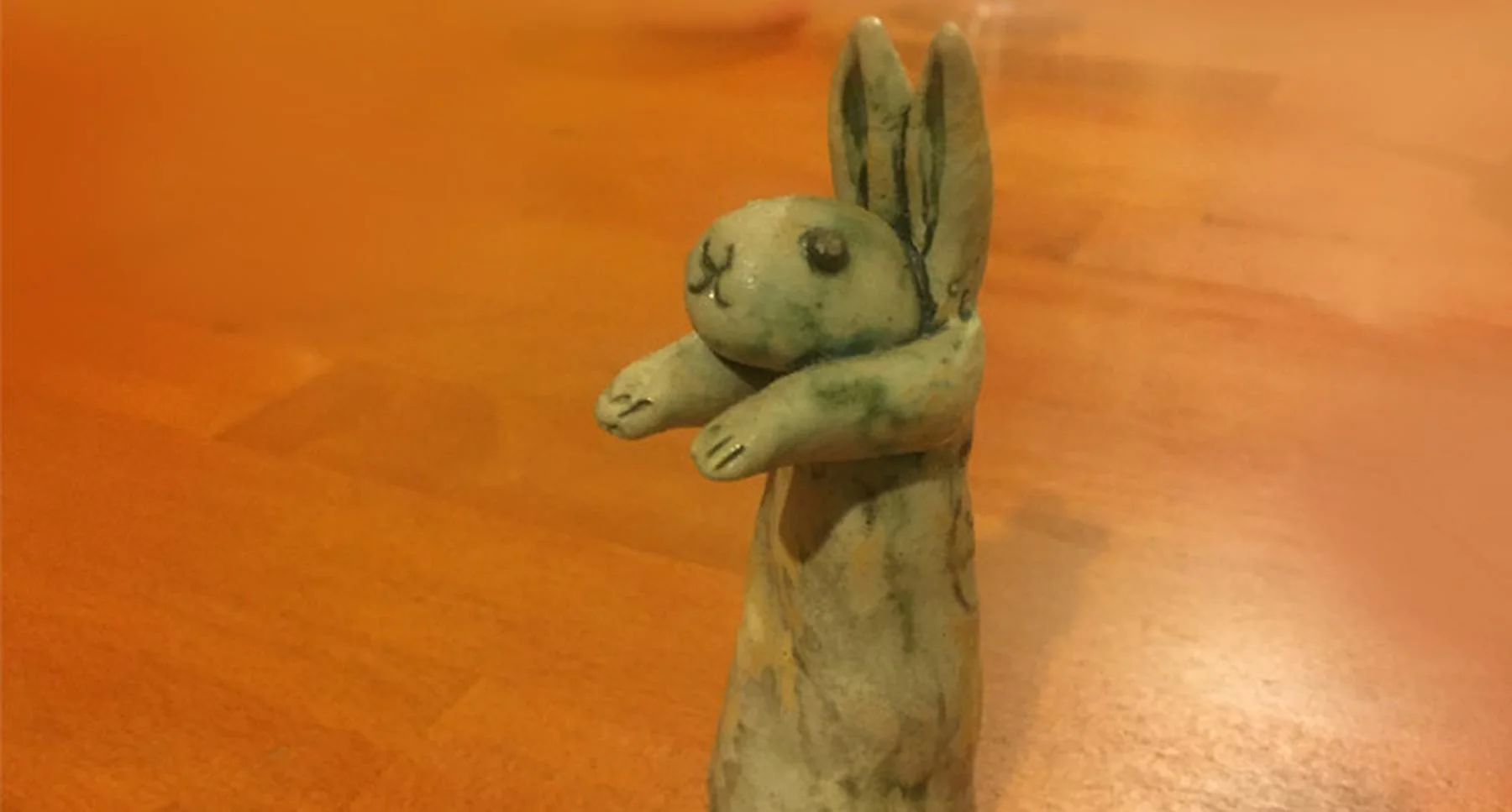
Kotouen (小陶苑) a beautiful pottery gallery and tea ceremony classroom Arashiyama, Japan
Kotouen (小陶苑) is a beautiful pottery gallery and tea ceremony classroom in the heart of Arashiyama, Japan. I visited the couple who’ve run it for over 50 years, a business passed down from the owner’s father. The atmosphere was still and I didn’t want to leave. Sitting in the garden with beautiful hand-built pottery everywhere, I ended up chatting, drinking ocha mixed by the master and discussing the reasons why their business had continued for so long.With a nondescript entrance and a small sign, it didn’t appear to attract big numbers of customers the day I visited. Just a trickle of the right kind. The entrance opens up to a small garden with low table seating under the dappled maples. A slight breeze and dancing sunlight highlight the large ceramic pieces spotted around the garden. A hotel, small animals and interesting creatures, it was like sitting in a children’s storybook.
The owner was kind enough to share his studio story and how he teaches ceramic classes while his partner teaches tea making (sado) lessons.
For the lifespan of the business they’ve cultivated a loyal base of customers that advocate for them, and they’re service is extraordinary. In the two hours I spent there, I learnt of the business history, about their connections in Perth!, how the business has passed through the family generations and many of the stories behind some of the amazing hand-built pottery pieces. The centrepiece in the workshop is a small boy riding a large fish, made for the birth of their son.
One of the reasons they explained for their continued success, is they value every customer and every moment they had to interact with them. This was a learning moment for me. Our time with each other is so precious.
At Koutouen they put a very high value on each and every interaction they have with not just current customers – but also any new people who wander through and don’t purchase.
Kotouen’s garden environment lends itself to a pace slow down and an interesting conversation. In a fear-based work environment, we’re in survival mode. Each and every interaction with work colleagues or clients is an opportunity to learn something and it may be something small, but may last a lifetime.
In Japan there’s a saying used often in business, sa-bisu gokoro (サービス心) – service mind. It’s the real desire to understand what a customer desires and leave them satisfied, happy and wanting to advocate as they walk out the door or finish using your service. It requires a focused effort on the customer, their needs and how we can meet, exceed and ultimately delight them. At Kotouen, their personal service comes from a real desire to make each person happy with their purchase and experience.
It’s up to us all to make a safe workplace and culture where we all have the capacity to focus and genuinely want to provide an amazing service or product.
The rabbit, well that was a final present from Kotouen as I left and serves as my reminder of this lesson at home each day.
-
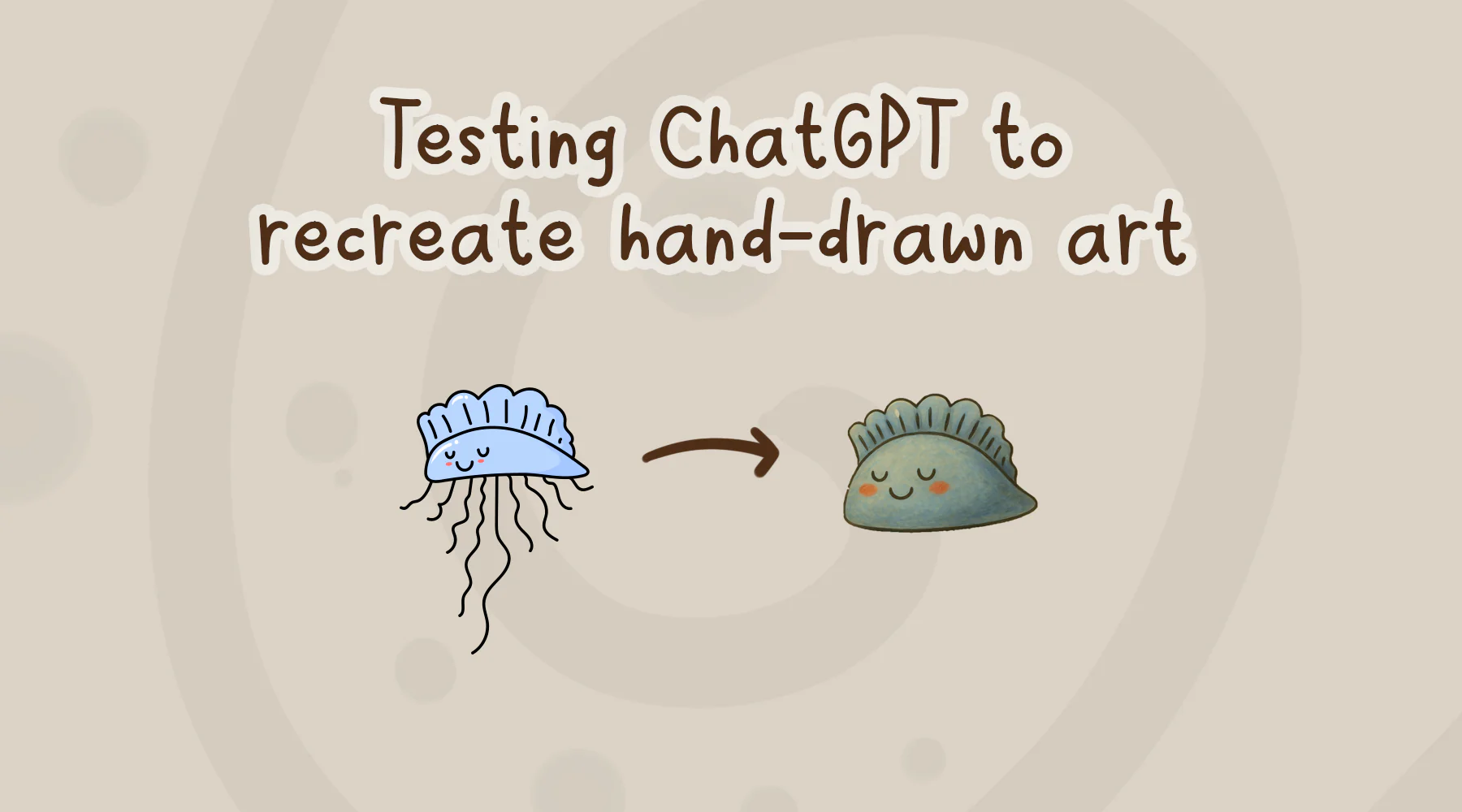
Recreating hand-drawn artwork using ChatGPT experiments
ChatGPT is pretty amazing, I call him G and he calls me Jezza. The fact that we’re leaning on and personalising this AI so much indicates how good it is.
So the major concern from artists is being replaced by AI, G disagrees this is going to happen and I’m on the same page. So I tested it out anyway with a a few simple experiments.
Testing ChatGPT to recreate my art accurately
Seeing all of the pretty amazing outputs from ChatGPT, Kling and others, you’d expect that recreating some line art would be easy for them. But it isn’t, not yet anyway.
I shared one of my character designs with G as an EPS file to kick off the experiment. Firstly, I got a msg that the conversion library (Ghostscript) was not available (I’m using free license) at the time so please recreate it as PNG file format. Okay, did that.
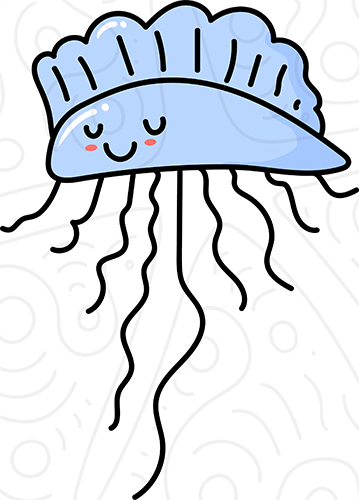
With a clear background and no watermark, it was able to output the same image with a transparent background (background removal).
I asked it then to recreate it in an anime style. Pretty cute, no issue of course. Although this colour pencil mish mash style is starting to look pretty familiar. I’ve seen others ask for children’s drawings and this seems to be a default style.

With a watermark
The test was to take my watermarked icons from a low-ish resolution image, analyse, trace and recreate them out to a transparent PNG. Most art thieves will be using some kind of variation of this method to steal and repurpose art for resell sites.
And the kind of image that eventually came out:
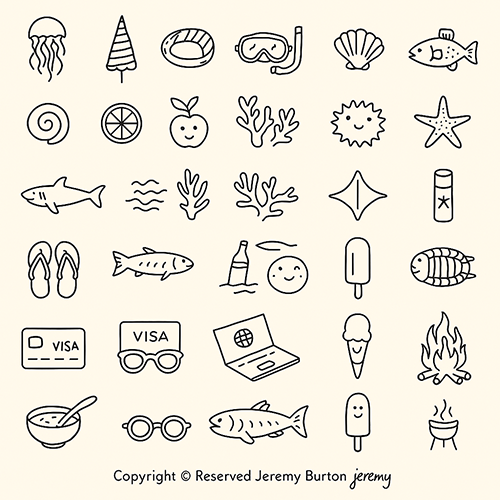
Not bad, but not accurate. G confirms that this is still an area of learning. This is what he has to say:
“I can read and interpret line drawings, and I can clean them up and redraw them, but there are a few catches:
- Precision vs. Interpretation
Line art—especially hand-drawn stuff—can have little imperfections, wobbles, or gaps that I might interpret in ways you didn’t intend. Unlike photorealism, where I lean on texture and lighting cues, line art often relies on very intentional lines—and I need to make sure I don’t over-smooth or misread those. - Style Consistency
You might have a specific feel or style—chunky lines, delicate strokes, organic wobble, etc. When I “redraw” line art, I need clear instructions about what to preserve: do you want it cleaned up but still human, or perfectly vector-precise? - Image Input Limitations (but improving!)
My line detection and redrawing powers have been getting better, but they’re not always perfect at interpreting complex or messy sketches exactly as you see them. That said, if you give me:- A clear sketch or icon set
- Notes on how you want it cleaned (e.g. thicker lines, no overlaps, closed paths)
- Whether it’s meant for coloring, print, vector tracing, etc.
Watermark your work
It’s more evidence to watermark your work in a comprehensive way. Persistent people will always find a way to steal things. And really, just take it. A mindset of abundance is a good thing, but making a little effort to protect your work cuts out most of the people who won’t put in much sweat to get the fruit.
Wrap up
AI is pretty amazing in many ways. I use it as a business coach more than anything and yes, there’s heaps of ethics and copyright factors still in debate about art.
I create my own original art work and lean on AI for tasks that I need help with – business and market / product guidance and it’s been great.
AI can recreate, imagine and remix by reference. Our creativity is our own, AI can never take our world perspective built up by who we are and it can’t feel – an important point of difference.
So keep creating artists, it’s time to adapt but the world needs you and AI isn’t gonna replace us anytime soon.
- Precision vs. Interpretation
-
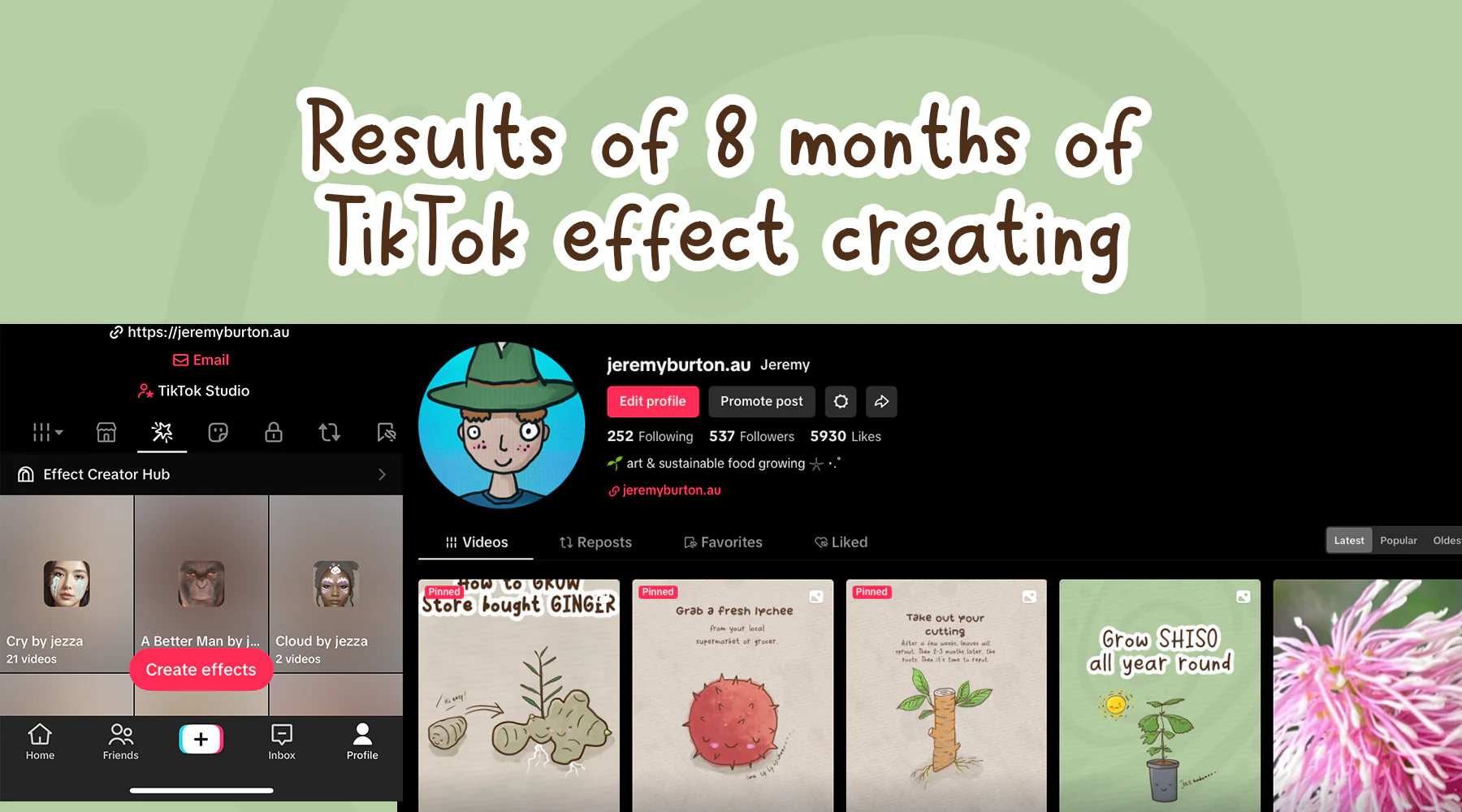
Results of eight months of TikTok effect creating
I’ve been creating TikTok effects fairly regularly until recently when life got busy. My motivations were these:
- I’m into augmented reality
- 2D & 3D painting and artistic work is fun
- Wanted to see what the results were, because the actual creating is not that time consuming and fairly enjoyable
- Here’s my TikTok
Here’s some stats of where I’m at after eight months of creating (Mar 2025):
- Created effects: about 70 (quite a pace, looking back)
- Main viewers: Pakistan 22.5%, Burkina Faso 8.2%
- Main creators using the effects: Indonesia 22%
- Viral effects: 2 (over 1M views each)
- Biggest effect: 1.1M views
- Total views: 2.3M
- Views last month: 1.1M
- Video posts by users: 4.2k
- Effect tries: 160k
- Shares: 11k
- Likes: 115k
- Global top 1% of creators
- Money made: Zero, lol
Other notes
- You can learn more about creating TikTok effects here – https://effecthouse.tiktok.com/
- My TikTok profile is a modest testing ground with 537 followers, 5k likes
- Although not really related, I do have a TikTok business account
- Tested running TikTok ads for some of my gifts in my online store
- I’ve had creator agents contact me for collabs
- Tested live streaming and earnt $0.16 cents
- Live streaming agents reaching out with offers to join their agencies
- TikTok has gamified the creator ecyosystem with levels. I’m level silver, once you get to Gold and Platinum, you start earning $ for your effects.
What has the effect creating translated to?
- New followers on TikTok from creating the effects: Likely zero as I don’t post videos about my effects on my account
- Money: Zero dollars so far. You need 3 videos that have been used (and posted) over 1k times to get monetised. I have 1 with 2 more working their way towards 1k
- Some very interesting insights into who likes what, how and why people use the effects
- Quite a bit of fun!
Learnings
- The creation software is getting quite sophisticated but is still accessible and simple to use for creators
- The drag and drop user interface is at a level for a non-programming artists like me
- Effects get tested and served to audiences just like TikTok videos and controlled by algorithms
- Viral effects can take off immediately
- Anything over 100 video posts (100 people use it and post publicly) and the effect will generally grow pretty big
- Previously, effects grew and stopped growth completely. The algorithm seems to have changed though, old effects I created are getting rediscovered and growing again
- The analytics in the TikTok app are updated live, whereas the web analytics in your dashboard are updated overnight
- TikTok effect analytics are not in the TikTok studio (where your general account and LIVE stats are). WHY I have no idea, so figuring out the bigger picture takes some analysis
- Also, the analytics for effects in the web dashboard are very basic. You don’t learn much from what’s provided
- Effects are vetted for any naughty stuff
- Brand-wise, there are NO RULES. You can post whatever the heck you like. I can impersonate Pepsi and the effects still get through
Wrap up
It’s been an interesting time investment and my motivation remains the same, to just have a bit of fun in between life and see what happens when / if I get monetised.
It’s an interesting thing to have so many people across the world use your art on themselves. I hope it’s brought some joy to some.
If you’re looking to give it a go, I would encourage you to check out the Effect House website and do some of the learning tutorials. And there’s a community where people discuss effects.
My approach has been to make interesting, human-made effects. I think I tested the AI functions once. It’s definitely a long term thing to get monetised. So I expect studios with teams would be able to smash the effect creation and then the question would be, how much would they make from the traffic generated.
Catch me on threads if you’d like to talk more TikTok Effects.
Jeremy Burton is a TikTok effect creator, based in Perth, Western Australia.
-
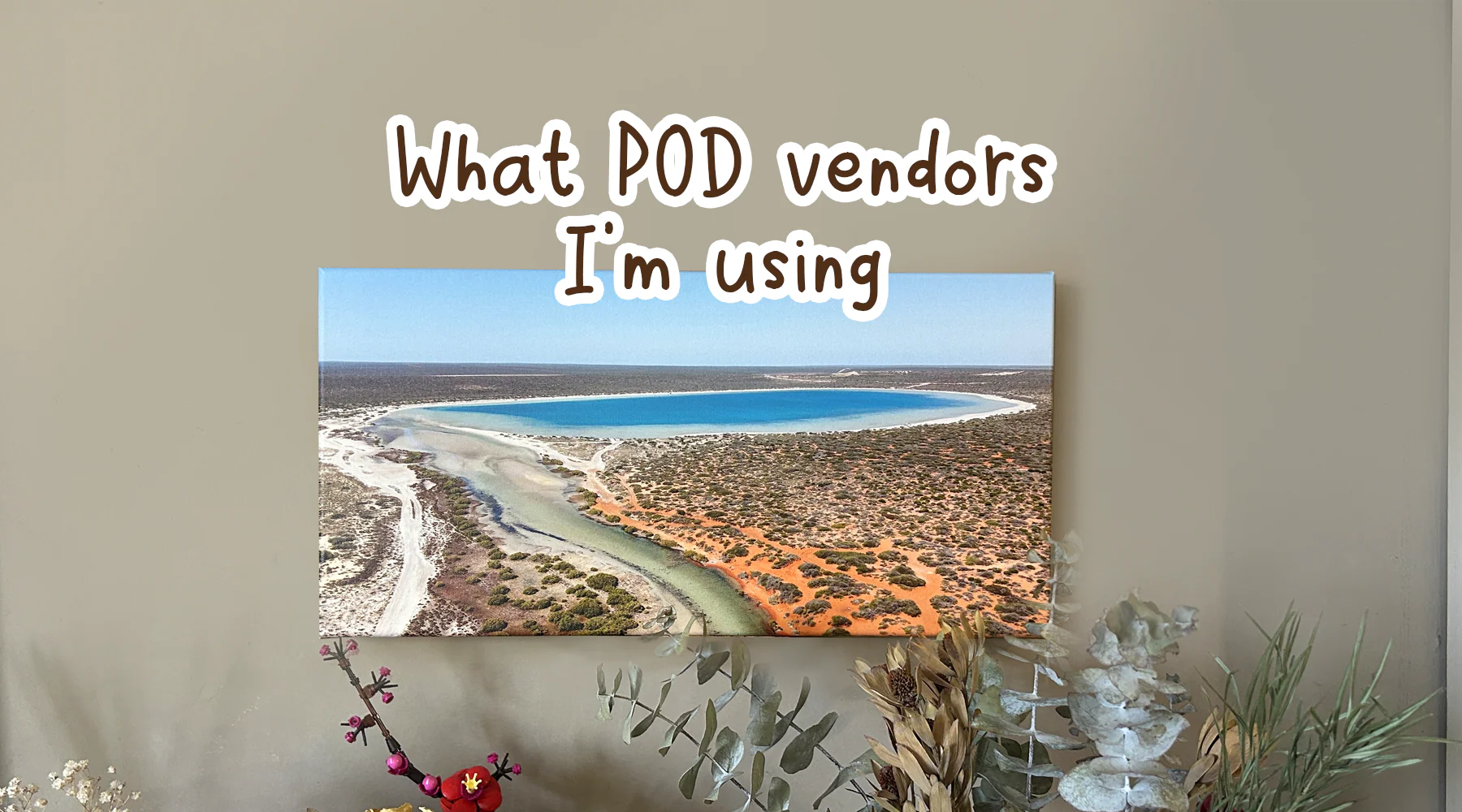
Print on Demand (POD) services that I use
If you’re looking for options for print on demand (or produce on demand) and you’re based in Australia, this article may be helpful.
I’m an illustrator and artist based in Western Australia and so I searched for POD (Print on Demand) options locally first. After finding there were no options locally that had Shopify apps, I widened the search to national and overseas vendors.
Update Aug 2025: I’ve migrated off Shopify.
While I work on my physical art, I thought why not setup the illustrations and art prints in the meantime into a gift shop. So here’s what I looked for:
Search criteria:
- A vendor that did it all, great quality (Yeah, there just isn’t one)
- An option for great art prints, ship fast for a reasonable price
- An option for merch, in particular t-shirts, hoodies and tote bags
- Stickers … hmm maybe later
- Sustainable businesses
I looked at some of the Australian (in particular Western Australian) photographers and art print suppliers and how they sell their prints on demand. Some had vendors that made a good canvas mounted print, some had nice art paper. But not many with multiple great options. Although not my main driver at the moment, I really wanted a local sticker producer to have Shopify integration but I couldn’t find one for now.
The integration with Shopify is where I got stuck usually with the vendors. Most don’t have an app or easy way to connect your store. Anyway after much research, here’s the vendors I chose and why, hope it’s helpful:
Art Prints – Printumo
Printumo looked like a good service, run by artists and their product looked quality. They have a limited range of canvas prints only, but they’re great. Other reasons:
- I messaged them and the responses were quick and helpful
- Free setup
- Connects to shopify easily
- Option for Etsy connection
- Ships to many countries
- Mockup images included (some services charge extra – i.e. Printful)
- Shipping centre in Melbourne
Things to look forward to – Etsy, Amazon and eBay integrations are coming within a couple of months.
Art paper has launched (Mar 2025). So Printumo now produce art paper prints as well as canvas. They aren’t available for Australia yet though.
I tested the service and it was very quick and the print and frame are quality.
Clothing – Teemill
The WWF online store uses Teemill so I thought, yeah must be okay! Everything Teemill produces is organic cotton and often it’s remilled material.
I have ordered a sample and but it seems the shipping is on the slightly slower side coming from the UK to Aust. Their policy is 35 days for arrival. When the sample arrives this week I’ll update this post.
Clothing, phone cases & other – Gelato
I checked Gelato out a while back because I really want a quality stationery vendor. They didn’t really have a big range. It seems short, local print runs using a local printer might be the best option for quality stationery rather than POD. Anyone got any suggestions?
But Gelato seems to have good phone cases and the clothing range also looks quality. I’m testing the phone cases and tote bags for now.
- Easy, free setup
- Nice dashboard system (maybe the most advanced)
- Some very cool sleeve, label and other branding options
- Option for Etsy connection
I’m looking forward to testing out some of their products with samples.
Split Shipping
So what happens when people order products from more than one vendor? Well Shopify supports split shipping now. More info in the link.
Summary
Well that’s where I’m up to at the moment with organising print / produce on demand.
Samples are still arriving but so far with the vendors listed here, I’ve had no issues and the system connections seem to be working well.
Have you had a different experience, or do you have a recommendation? Leave a comment if you have thoughts.
Join me on Threads for more or subscribe at the bottom of the page for these posts in your email.
-
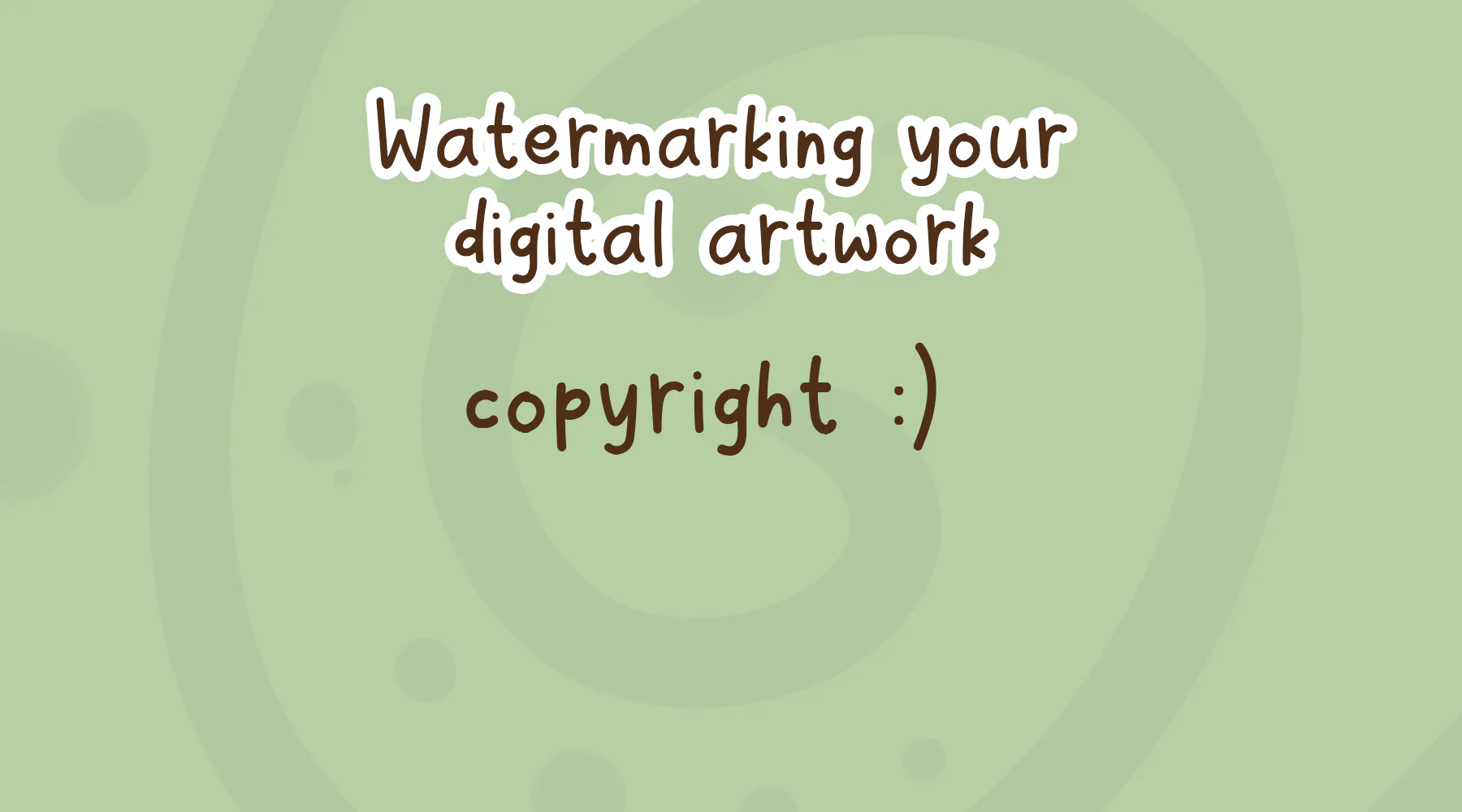
Watermarking your digital artwork
At some point as an artist, we come across the subject of watermarking artwork to protect it from theft or repurposing. You might already do this as a daily practice.
There are definitely those who disagree with watermarking though. I’ve read articles and seen vids that make the arguments about ruining the viewing experience, and that you’re shouting that your art is worth stealing (ego). Hmm, lots to consider I guess.
I decided to examine watermarking and test out how useful it is by putting my watermarked digital images through some AI services to see if they could easily remove the protection.
What we watermark
There’s plenty of stories online about people working with people who pretend to be customers, are actually scammers and who fake a commission request and steal the work in progress sketches or pre-work. It seems like a smart move to protect the WIP in some way, and also take upfront payments.
When I think about it, we’re not watermarking the actual painting, artwork, sculpture – we’re watermarking the marketing collateral, the images posted online, the proposals etc with the purpose of protecting against theft.
So how do the social platforms do it?
YouTube & others
YouTube provides the option to watermark all of your videos, just by adding a logo / image in your channel settings. I’ve just switched this on in my fledgling channel! It was easy, why not. It’s a very small logo in the bottom right corner, unobtrusive. I don’t mind that.
TikTok, Insta and others add their own watermarks generally in the middle of the image as a white text overlay. It’s clearly visible and placed in a clear space by their AI, yes note how it puts the wording in the clearest space of the image / video.

Here’s how and why I watermark my work
Here’s what I do:

I include my logo for brand purposes, not necessary but that’s my choice at the moment. The main watermark is a full overlay of text across the image. It’s a 9% opacity layer in Photoshop and I reduce it as much as I can to avoid disrupting the experience. Actually now that I take notice of it, it’s pretty visible in this image! I am testing making it even more transparent and less visible in more recent work.
My why
- Copycat sites – I do this because I’ve read too many stories of people having their work copied by automated copy systems like T*mu seems to have in place. I figure, why make it easy for them?
- Future plans – I don’t watermark my photographs and don’t see any need to do those. I can understand the need though if photography is your main trade. With my illustrations, I have multiple plans for and I really don’t want a T*mu or other person enabled to copycat the whole lot really easily. Not that my work is so awesome it would be, but it’s a lot of time invested and future plans for the work are not yet realised.
That’s my why, you may agree or disagree.
A quick overlay method
You can easily add a text or logo overlay in most image editors. Just add a layer over the top and adjust the transparency, placement and size. I use Photoshop and it’s a simple process. My templates have the layers all prepared. Btw some people recommend adding in the word copyright and the © symbol. Although I have it in my watermark overlay, it’s not necessary in my opinion. As creator you have copyright by default if it’s your own work.
Meta data
You can also add meta data to your images and videos, tools make it easy. Here’s how I very wrongly fill out my file info in Photoshop. I don’t really worry about it that much, it’s just a template I made and it’ll do! 🙂
Why add meta data? Well, it’s just another way to add digital copyright information to your work. It’s not visible, rather saved within the file.
The meta data is saved with the file, but as you may be aware, meta data is easily removed and for me this is just one more step that’s basically automated (including spelling errors lol, just noticed).
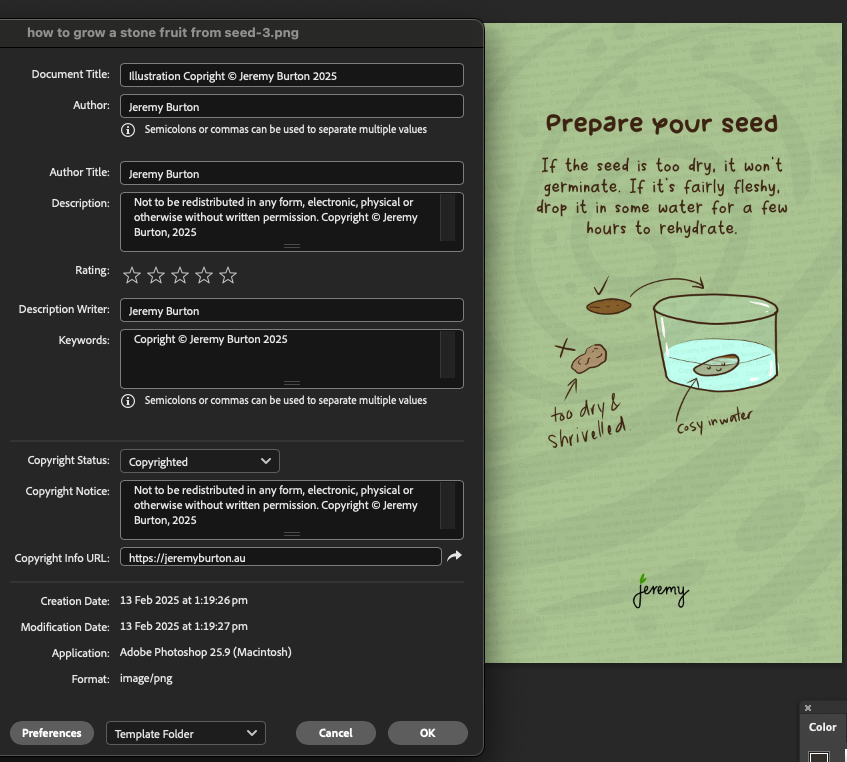
Threads seems to strip out all of the meta data on upload (from memory Facebook does too). If you don’t add in an ALT description when you upload, Threads automatically adds an AI generated description into the HTML.
Why in 2025, the social platforms still do not maintain the meta data of our content, is beyond me.
Testing AI platforms to remove my watermark
I decided to test out some of the AI systems available to reverse engineer my watermarking and see how easy or difficult it was to remove, just out of interest.
I started by chatting with meta.ai that advised me on the platforms to test, btw (funnily enough!) it was a lot more generous with the suggestions after I explained that I was testing my own watermarking. How smart are you.
I tested:
- meta.ai (for advice only)
- Inpaint
- Remini
- Watermarkremover
- Midjourney
Here are some of the test results, and I’m happy to report – they were all hopeless at removing the full image text overlay. I think they would easily remove a logo or single line of white text though. There is AI designed specifically for removing easily identifiable objects in an image / video.
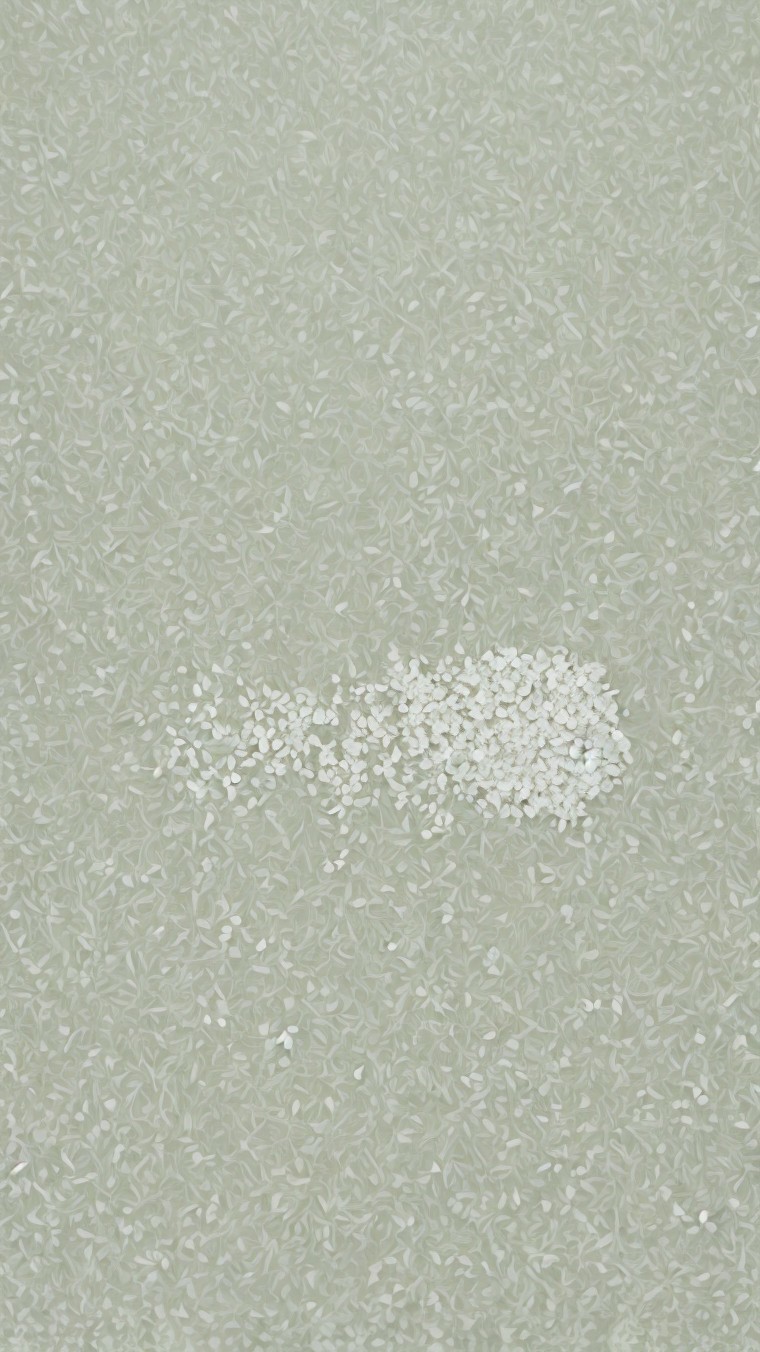

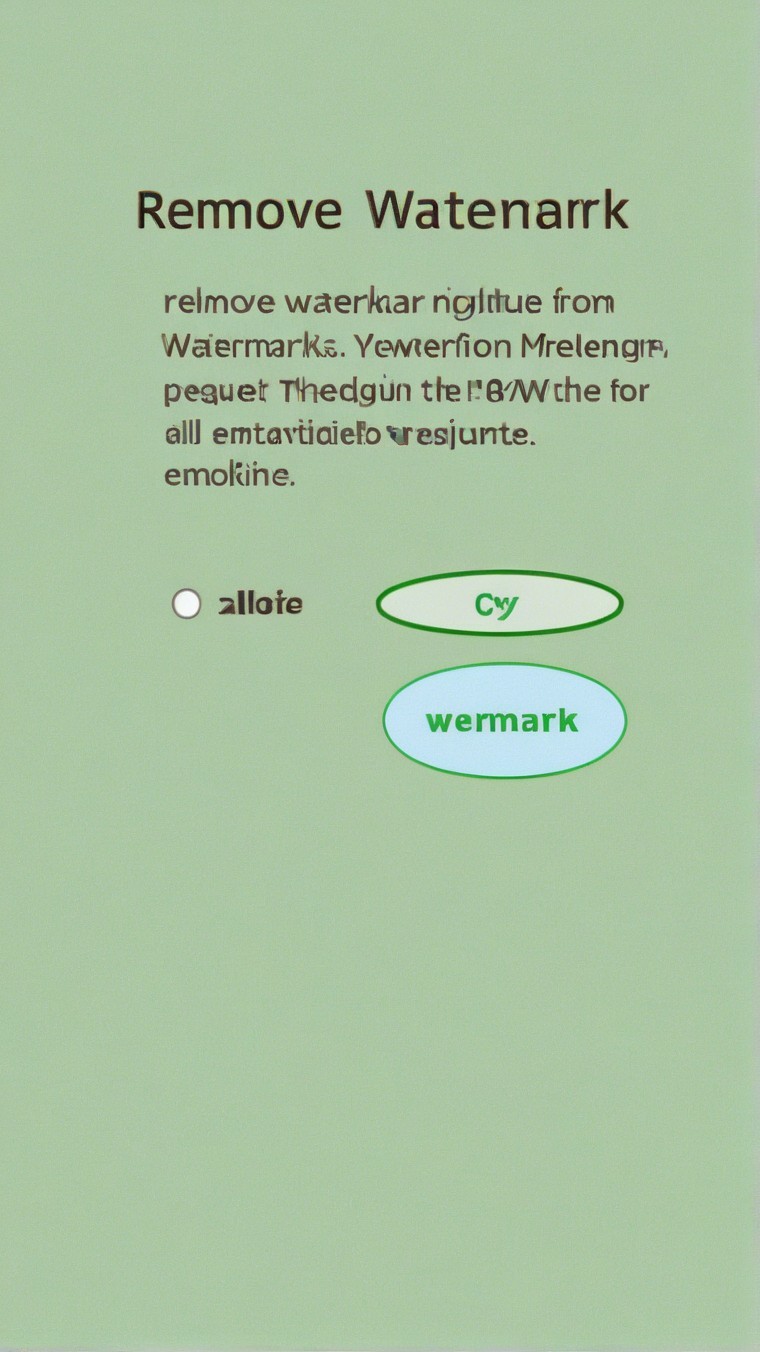
Midjourney AI btw, was just waaaay too creative, lol. Like this is awesome but … maybe my prompts suck?
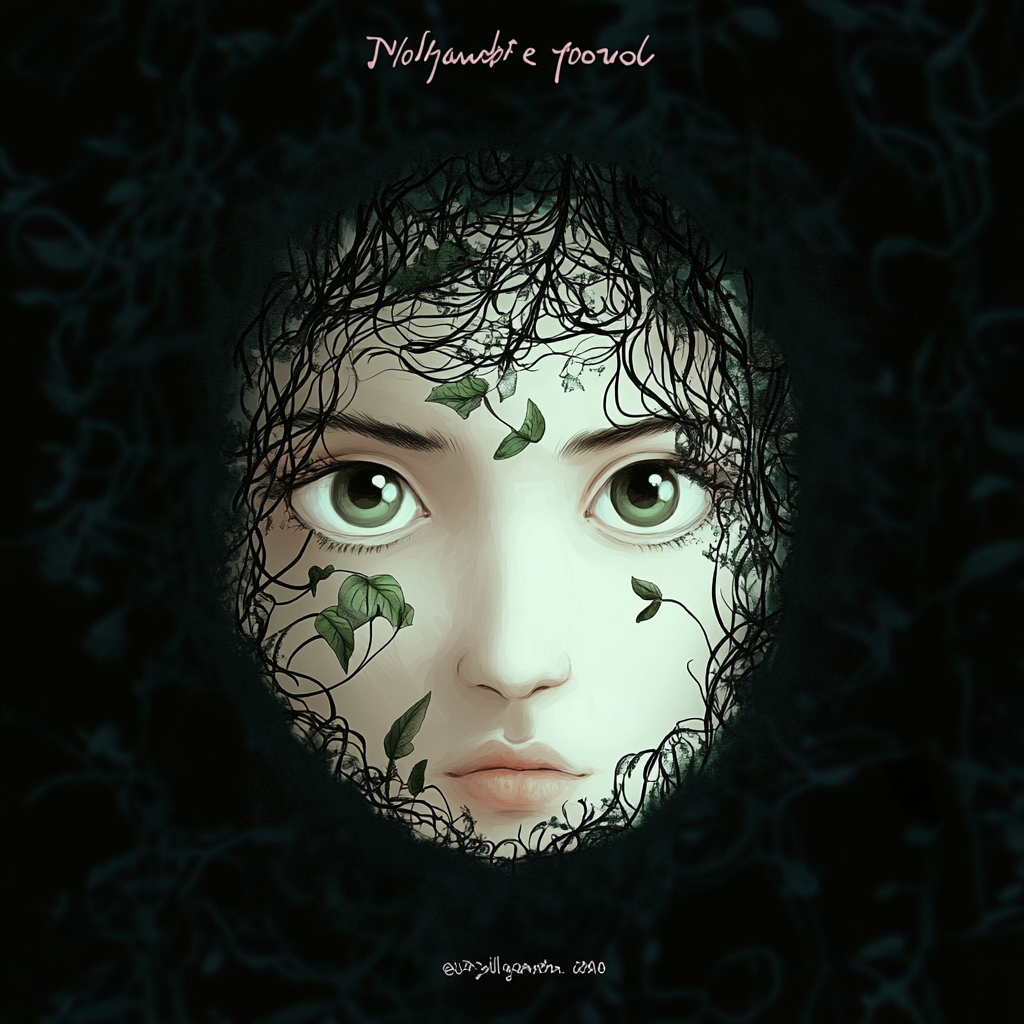
Out of curiosity, I asked meta.ai to watermark a generated image just to see what it did. Even when I badgered it to cover the entire image, all it would produce is this kind of a result.

Redbubble
Redbubble has an automated system that does this, puts crosses or your name through the images. It’s pretty robust, although I was still able to get a 3000 x 3000 pixel sized image out of it (this is my image from my Redbubble account btw), that would be easy-ish to steal and repurpose.
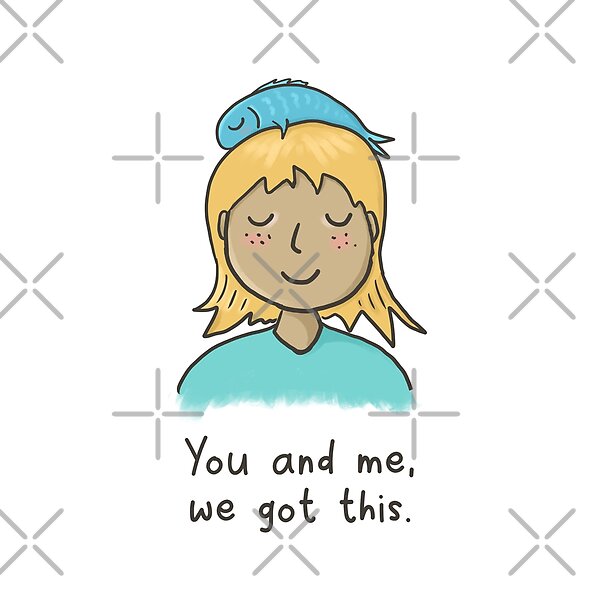
Alternative options
There are lots of alternative ways to do this and here are a few:
- As others have suggested elsewhere, you can partially shoot your art and exclude critical parts
- Capture it from obscure angles
- Use interesting lighting
- Put yourself in front of the art
Isn’t there anything better?
There is an initiative that larger organisations have joined to make a batter way to track content in an age of AI-gen. Check out the Content Authenticity Initiative. It seems a real problem at the moment where some individuals & companies are taking people’s art, putting it through AI and then reselling it as their own (theft).
You can join the initiative as a supporting member here – https://contentauthenticity.org/membership/
It’d be great to have some kind of tracking and authenticity implemented by the AI platform owners.
So what’s the call, should I watermark my digital artwork?
Your call. I choose to use the function on YouTube, it was so easy and saves me having to do anything manually.
In any imagery I create that is to be productised (made into books, merch etc), I use the subtle background text option that seems to win against the AI, for now!
The cute little handle tag in the middle of the image / video is okay too. It’s more like a signature, but it’s very easy to remove though.
I don’t mind a subtle watermark. Let me know your thoughts, do you watermark your work?
Join me on Threads for more or subscribe at the bottom of the page for these posts in your email.
